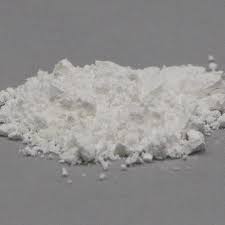Professional industry ceramic supplier, silicon nitride, silicon carbide, aluminum nitride and any other kinds of ceramics.
Dysprosium oxide is a chemical substance with the chemical formula Dy₂O₃. White powder, slightly hygroscopic, can absorb moisture and carbon dioxide in the air. Magnetism is many times stronger than ferric oxide. Soluble in acid and ethanol. Mainly used for lighting sources.

Physicochemical properties of dysprosium oxide
White crystalline powder, insoluble in water, soluble in acid and ethanol. When exposed to air, it is easy to absorb carbon dioxide and turn into dysprosium carbonate.
Dysprosium oxide preparation
Dysprosium nitrate solution reacts with sodium hydroxide solution to generate dysprosium hydroxide, which is calcined after separation to obtain dysprosium oxide:
2Dy(OH)₃═Δ═Dy₂O₃+3H₂O
Dysprosium oxide Dy2O3 overview
Dysprosium oxide Dy2O3 is white powder, slightly hygroscopic, and can absorb moisture and carbon dioxide in the air. Magnetism is many times stronger than high iron oxide. Soluble in acid and ethanol. Mainly used for light sources.
The relative molecular weight of dysprosium oxide Dy2O3 is 373.00, and the relative density (D274) is 7.81. Melting point is 2340 plus or minus 10°C. The boiling point is 3900°C.
The nuclear power industry uses nuclear reactor control rods. Magnetic material. Comprehensive utilization.
It is a pale yellow to pale green, slightly hygroscopic powdery powder specially formulated for use in ceramic, glass, phosphor, laser and bimetal halide lamps. It can react with acids to form the corresponding (III) salts:
Dy2O3 + 6HCl→2DyCl3 + 3H2O
When the oxidized dysprosium is exposed to the air and becomes carbonic acid, the dew easily absorbs the carbon dioxide.
Application of dysprosium oxide Dy2O3
Dysprosium oxide is used as metal raw material, glass additive and NdFeB permanent magnet.
Dysprosium oxide Dy2O3 is used in metal halide lamps, magneto-optical storage materials, yttrium iron or yttrium aluminum garnet, and the atomic energy industry.
Adding about 2 to 3 percent to this magnet can increase its awareness. In the past, the demand for dy was not large, but with the increase in demand for NdFeB, it has become a necessary additive element, with a grade of about 95-99.9%, and the demand is also growing rapidly.
Dysprosium oxide Dy2O3 price
The price of dysprosium oxide Dy2O3 powder will change with random factors such as production cost, transportation cost, international situation and market supply and demand of dysprosium oxide Dy2O3 powder. Tanki New Materials Co., Ltd. aims to help industries and chemical wholesalers find high-quality, low-cost nanomaterials and chemicals by providing a full range of customized services. If you are looking for dysprosium oxide Dy2O3 powder, please feel free to send an inquiry to get the latest price of dysprosium oxide Dy2O3 powder.
Dysprosium oxide Dy2O3 material suppliers
As a global dysprosium oxide Dy2O3 supplier, Tenki New Materials Co., Ltd. has extensive experience in the performance, application and cost-effective manufacturing of advanced engineering materials. The company has successfully developed a series of powder materials (including zinc oxide, zirconium oxide, titanium oxide, tin oxide, etc.), high-purity targets, functional ceramics and structural devices, and provides OEM services.
| Dysprosium Oxide Powder Properties | |
| Other Names | Dysprosium sesquioxide, Dysprosium(+3) cation; oxygen(-2) anion, |
| Didysprosium trioxide, Dysprosium(III) oxide, Dysprosium trioxide, | |
| Dysprosia | |
| CAS No. | 1308-87-8 |
| Compound Formula | Dy2O3 |
| Molecular Weight | 373 |
| Appearance | Light Yellow or White Powder |
| Melting Point | 2408 ℃ |
| Boiling Point | N/A |
| Density | 7.81 g/cm3 |
| Solubility in H2O | N/A |
| Exact Mass | 373.841 g/mol |
| Monoisotopic Mass | 375.843144 Da |
| Dysprosium Oxide Powder Health & Safety Information | |
| Signal Word | N/A |
| Hazard Statements | N/A |
| Hazard Codes | N/A |
| Risk Codes | N/A |
| Safety Statements | N/A |
| Transport Information | NONH for all modes of transport |
